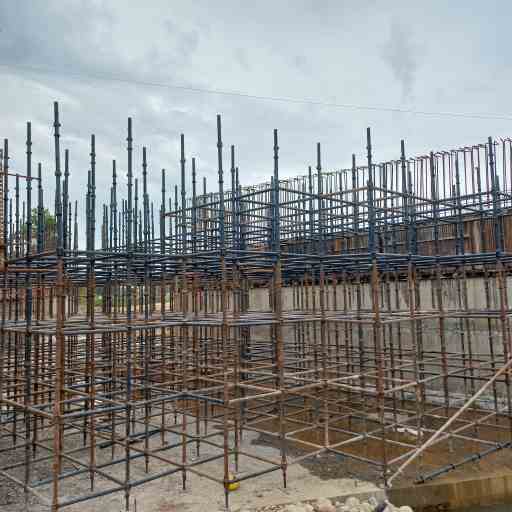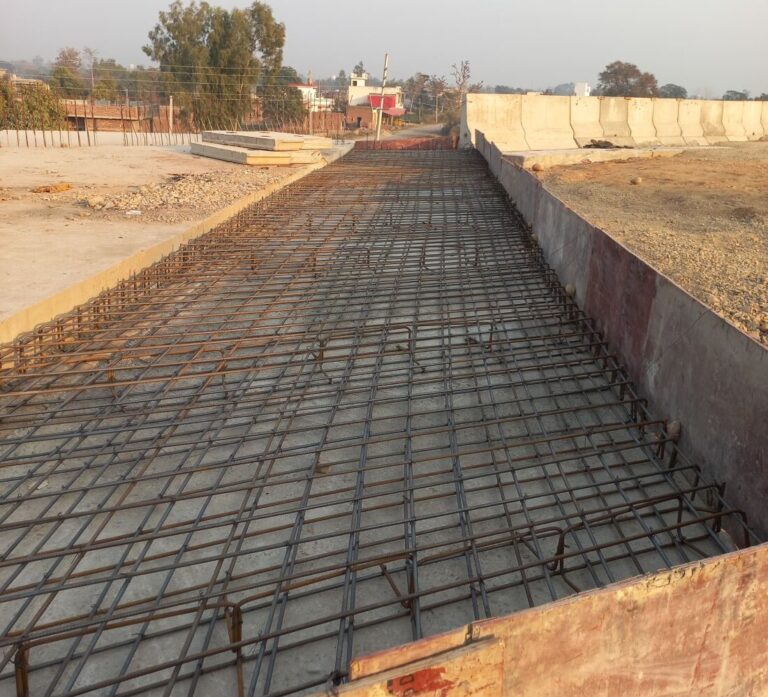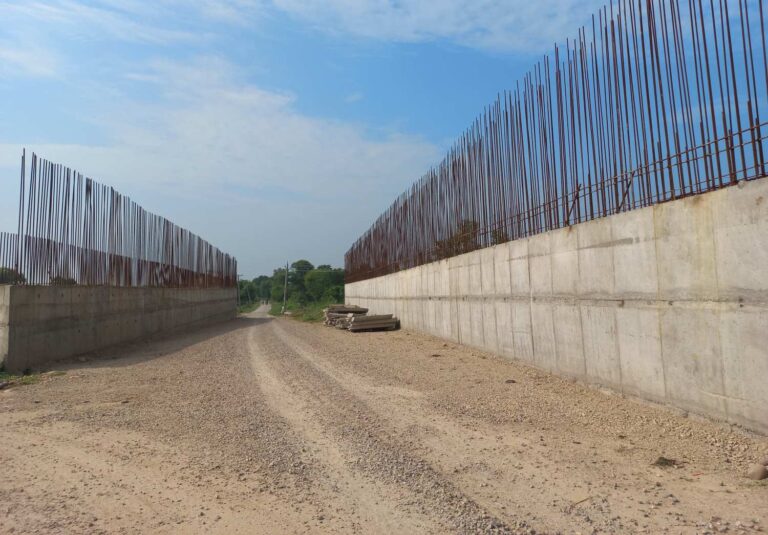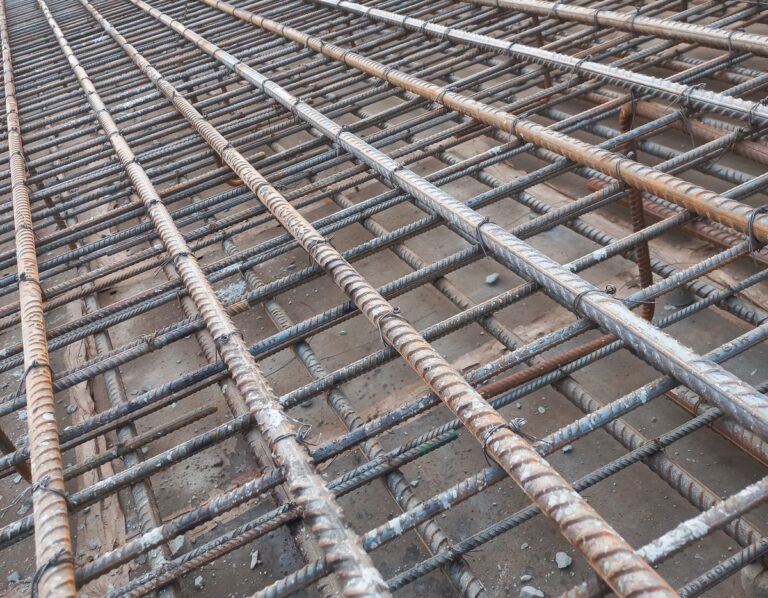A cut-off wall is a wall constructed at the periphery of a raft, with a thickness of 300 mm and a depth of more than 200 m. Its main purpose is to prevent the flow of water or soil and to enhance the stability of the structure. A cut-off wall is not necessary for every culvert construction. It is used only where the soil quality is loose and sandy.
Importance of cut-off Walls in culvert construction
A cut-off wall is a type of wall built around a culvert raft structure to stabilize soil or sand. Its main purpose is to stop the flow of water or soil and to increase the stability of the culvert structure. It is especially used in areas with loose and sandy soil quality.
During the rainy season or when the dam gate is opened, the flow of water can become very strong, posing a threat to the culvert structure. At such times, a cut-off wall prevents the soil around the raft structure of the culvert from flowing away and keeps the culvert bridge stable even in heavy water flows.
Importance of cut-off Walls in bridge construction
The cut-off wall is crucial in bridge construction as it stabilizes the structure by preventing soil erosion around the foundation, particularly during heavy water flow. This is especially important in areas with loose or sandy soils, where the risk of erosion is high. By controlling erosion and managing water flow, cut-off walls maintain the integrity of the bridge foundations, ensuring the structure remains secure and stable even in extreme weather conditions.
Additionally, cut-off walls extend the lifespan of a bridge by protecting it from water damage and soil displacement. This not only preserves the structural integrity but also enhances the overall safety of the bridge for public use. By preventing potential failures caused by erosion and water infiltration, cut-off walls play a vital role in maintaining the long-term functionality and reliability of bridges.
Importance of cut-off walls in MNB
In MNB (Major National Bridge) construction, a cut-off wall is vital for stabilizing the foundation by preventing soil erosion, particularly in loose or sandy soils. It controls water flow, protecting the foundation from being undermined by erosion during heavy rains or floods. This ensures the structural integrity and longevity of the bridge, safeguarding it against potential damage and failure. Additionally, cut-off walls enhance safety by maintaining the stability of the bridge in extreme weather conditions, thereby ensuring reliable and secure infrastructure for public use.
Cut-Off Wall Construction: Process and Materials for Ensuring Structural Stability
To construct a cut-off wall, we first lay plain cement concrete (PCC) at ground level. Then, we place steel reinforcements and create a frame around all sides. Shuttering plates are installed on the sides, and concrete is poured into the frame. The process requires a large amount of steel, shuttering plates, steel wires, and green concrete. This method ensures the cut-off wall is strong and stable, effectively preventing soil erosion and water seepage around the structure, which is crucial for the durability and safety of the overall construction.
concrete cut off walls
Concrete cut-off walls are constructed using a transit mixture, comprising clay, sand, and chemicals, known as transite mixture. Also termed “green concrete,” this blend is environmentally friendly and non-toxic to humans. Its composition minimizes pollution, making it a sustainable choice for construction projects. Transite mixture ensures durable and eco-conscious structures, aligning with contemporary environmental standards and promoting a cleaner, safer environment for communities.
conclusion
Cut-off walls are vital in containing groundwater and preventing seepage. Cut-off wall construction is essential for controlling groundwater flow in various engineering projects. Proper design, materials, and installation ensure effective seepage prevention, safeguarding structures and the environment.
What materials are commonly used in cut-off wall construction?
Common materials include bentonite, cement-bentonite, clay, and concrete, chosen based on soil conditions and project requirements.
How deep should a cut-off wall be installed?
Depths vary depending on factors like soil permeability and water table depth, typically ranging from a few meters to tens of meters.
What techniques are employed to construct cut-off walls in challenging terrains?
Techniques such as slurry trenching, diaphragm walling, and jet grouting adapt to various soil conditions, enabling effective cut-off wall construction.








